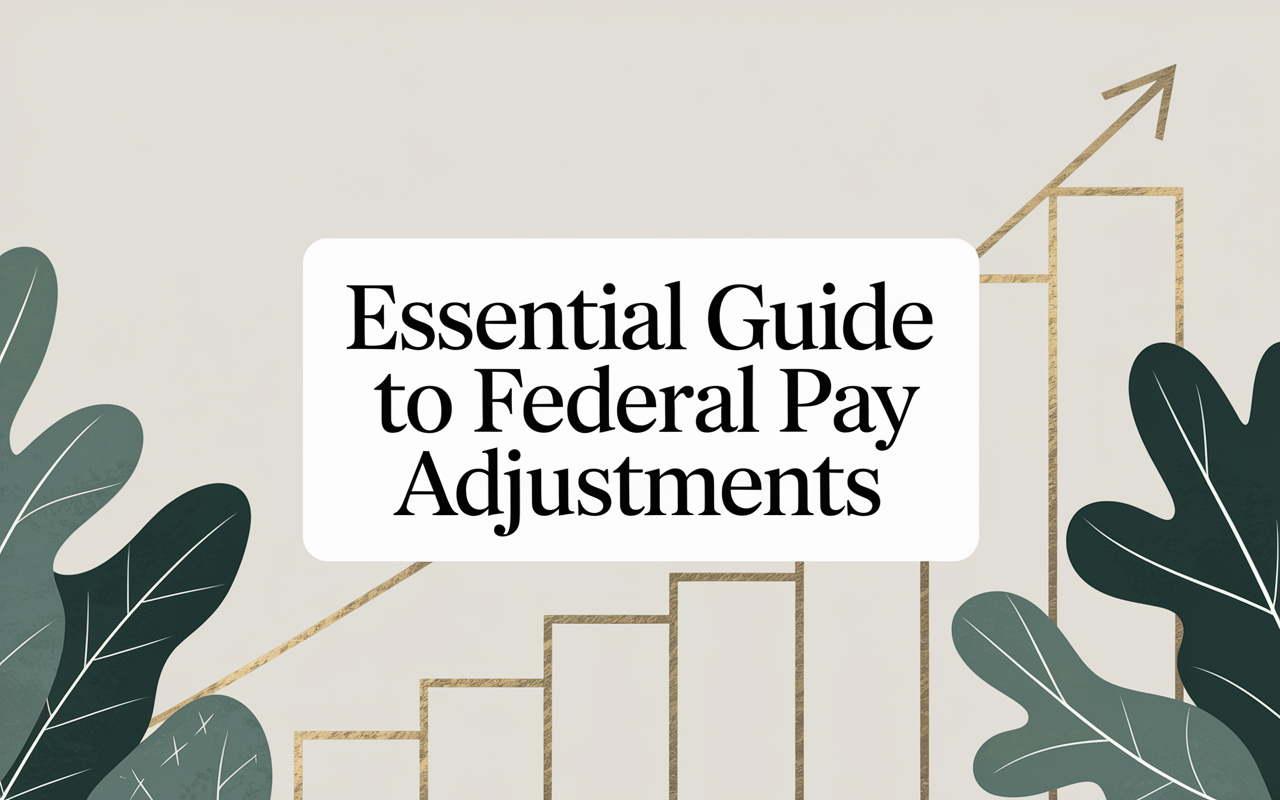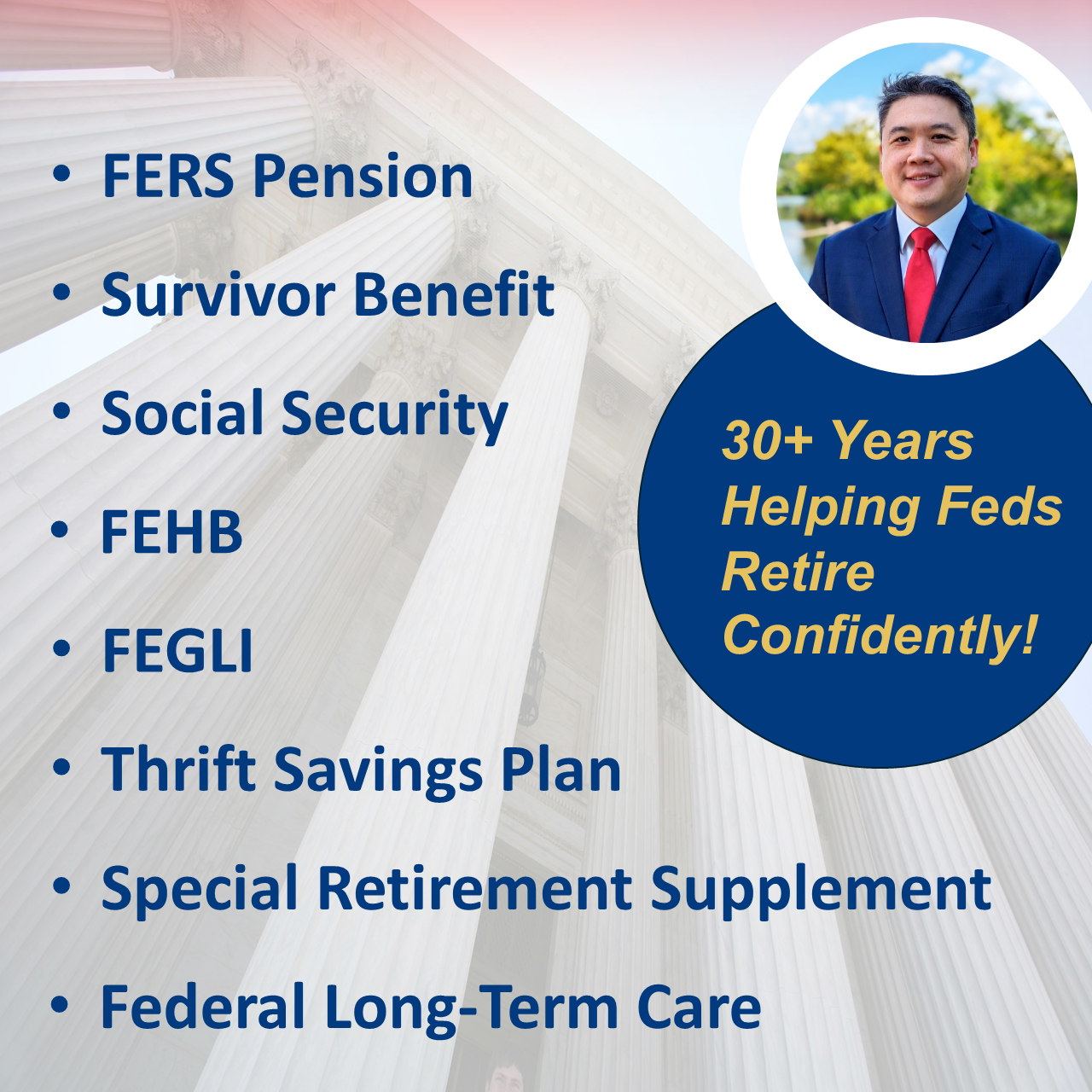Federal COLA 2025: Essential Guide to Pay Adjustments for Federal Employees
For both active and retired federal employees, understanding the 2025 Cost-of-Living Adjustment (COLA) and pay raise is a key part of retirement and compensation planning. In an environment with rising living costs, these adjustments protect your buying power and ensure you can maintain the lifestyle you’ve worked so hard to achieve. If you’re 55 or older and part of the federal or military workforce—active or retired—this conversation is especially relevant.
At PlanWell, our two founders have over 30 years of collective experience guiding federal employees toward retirement security, holding distinguished designations such as ChFEBC, CFP, and AIF. We leverage our proprietary Fed-Expert Financial Blueprint to help federal employees retire with confidence. In what follows, we will explore how the 2025 COLA and pay raises may affect you, explain how these changes are calculated, and show you ways to position yourself for financial success.
Why 2025 COLA Matters
Simply put, a “Cost-of-Living Adjustment” (COLA) is intended to keep your pension or benefits in line with inflation. Inflation erodes the value of money over time, and retirees can feel this pinch the most if their income fails to keep up with rising consumer prices. For 2025, federal retirees under the Civil Service Retirement System (CSRS) receive a 2.5% COLA, while retirees under the Federal Employees Retirement System (FERS) see a 2.0% COLA. Those receiving benefits through the Federal Employees’ Compensation Act (FECA) see a 2.8% adjustment, which occurs in April 2025.
How does this differ from a pay raise? The federal pay raise applies to active employees and is determined through the government’s budget and legislative process. In contrast, COLAs are more of an automatic adjustment tied to measurements of inflation—particularly the Consumer Price Index for Urban Wage Earners and Clerical Workers (CPI-W). Because many federal employees will eventually fall into the retiree category, it’s vital to pay attention to both the pay raise and COLA numbers over the course of your career. Each plays a role in either your immediate salary or long-term annuity.
Understanding How COLA Works
From a big-picture standpoint, the COLA granted to federal retirees hinges on changes in the CPI-W. CSRS retirees typically receive the full percentage that matches the year-over-year inflation figure, whereas FERS retirees face a limitation or “cap.” When inflation measures between 2% and 3%, the FERS COLA is capped at 2%. This is precisely why FERS retirees receive 2.0% in 2025, while CSRS retirees see 2.5%. FECA beneficiaries receive 2.8%, but it comes into effect in April because FECA ties its COLA to December-to-December inflation data, offset by a few months.
You might wonder when this adjustment shows up in your check. For CSRS and FERS annuitants, the 2025 COLA takes effect in your January payment. FECA recipients see the 2.8% in April 2025. By the time you receive that deposit, it’s designed to offset the higher costs you likely experienced in the preceding months.
2025 Federal Employee Pay Raise
Now, for those still on the federal payroll, there’s a 2.0% average pay raise for 2025. This number consists of a 1.7% across-the-board increase plus an additional average 0.3% in locality pay. Locality pay is designed to compensate for geographic differences in cost of living and labor markets. This means you might see a total increase slightly above or below 2.0% depending on where you’re located. Areas such as San Francisco or Seattle typically have higher locality pay adjustments compared to other regions. If you’re a higher-level employee who’s maximizing your pay scale, keep an eye on pay compression issues, which occur when regular General Schedule (GS) increases push salaries near Executive Schedule caps, curbing further growth.
Pay compression is not a new challenge. As more federal employees top out their pay bands, especially in high-cost areas, it can undermine incentives for promotion or advancement. While proposals exist to raise Executive Schedule pay levels or otherwise address compression, there is no guarantee that these proposals will pass in the near term. Knowing that is important for those approaching retirement, especially if you’re counting on a higher “high-3” salary calculation for your pension.
Comparison Table: 2025 COLA vs. Pay Raise
Although both COLA and pay raise percentages can sound similar, it’s helpful to see them side by side.
|
Adjustment Type |
CSRS Retirees |
FERS Retirees |
Active Employees (GS) |
FECA Recipients |
|---|---|---|---|---|
|
COLA/Pay Raise |
2.5% |
2.0% |
2.0% (avg.) |
2.8% |
|
Effective Date |
Jan 2025 |
Jan 2025 |
Jan 2025 |
Apr 2025 |
|
Calculation Method |
CPI-W |
CPI-W (capped) |
Presidential process |
CPI-W (Dec–Dec) |
This table showcases at a glance how each group is affected, when they receive their respective increase, and how that increase is calculated. Retirees look to the CPI-W for automatic COLA, but active employees rely on the political process, presidential proposals, and, ultimately, congressional or executive branch support.
How COLA & Pay Raises Differ
Even if the numbers sometimes coincide, COLA and pay raises differ in both their source and application. COLA is formulaic: if inflation rises a certain percentage, retirees’ annuities (especially for CSRS) reflect that. In contrast, pay raises come through a proposal in the President’s budget, followed by negotiations or congressional input. Some years, Congress could grant a higher or lower raise than the administration initially proposed. That is why pay raises can be unpredictable.
Another common question is whether a higher pay raise contributes to a bigger pension down the road. Since your pension is calculated based on your “high-3” salary average over three consecutive years, repeated pay raises can result in a higher final salary, strengthening your retirement benefits. That said, if monthly inflation runs particularly high after you retire, your FERS COLA might not fully keep pace, thanks to the FERS COLA cap. This so-called “diet COLA” means that over time, CSRS retirees often see more robust adjustments than FERS retirees.
Historical Context and Future Trends
Federal employees received a notably higher 5.2% average pay raise in 2024. As inflation moderated, the 2025 figure dipped to 2.0%. Early suggestions about 2026 indicate a potential 4.3% federal pay raise, but much remains uncertain until official proposals roll out. Either way, many advocacy groups argue that these annual pay raises remain insufficient for closing the wage gap between federal and private-sector jobs, which they estimate to be over 20% in some comparisons.
Retirees and near-retirees often look to organizations like the National Active and Retired Federal Employees Association (NARFE) for updates, as they lobby for better COLA formulas, especially for FERS recipients. Past high-inflation periods underscore the importance of a fair COLA to preserve purchasing power throughout retirement.
Social Security & Other 2025 Changes
No conversation about retiring from federal service is complete without mentioning Social Security benefits. In 2025, the maximum taxable earnings amount will rise to $176,100, along with adjusted earnings limits for early retirees. Tax rates, however, remain unchanged. If you receive Social Security benefits and a FERS pension, or if you plan to claim benefits soon, it’s wise to pay close attention to how these thresholds and angles on earned income could interact with your overall retirement timeline.
For instance, if you’re below your full retirement age, be mindful of the annual earnings limit, which can reduce your Social Security benefits if you continue working after you leave the federal service. Coordinating your choice of retirement date, TSP withdrawals, and Social Security start age can have a big impact on your long-term financial position.
Impact on Your Financial Planning
In practical terms, a projected 2.0% or 2.5% COLA doesn’t seem like a dramatic windfall. But even a modest COLA can protect your purchasing power in unpredictable economic environments. Since most federal retirees rely on annuities as a cornerstone of their retirement income, each year’s adjustment accumulates over time. And if you’re still working, factoring in the 2.0% average pay raise can inform decisions about retirement timing, especially if you’re trying to maximize your high-3 salary average.
Yet, planning around COLA and pay raises in isolation is rarely enough. Real financial confidence often requires a holistic look: Do you have a plan for generating income if inflation remains persistently higher than expected? Are you coordinating health benefits, TSP, and Social Security with your federal pension to ensure you won’t outlive your savings? With PlanWell’s Fed-Expert Financial Blueprint, we use our expertise in ChFEBC, CFP, and AIF to offer a tailored perspective on how all these moving parts fit together. Our approach is about making sure you’re looking at the complete picture for long-term sustainability.
If you want to dive deeper, we encourage you to sign up for one of our free Federal Retirement Planning Workshops. These workshops provide insight on how the current and future COLA figures, pay raises, Social Security adjustments, and other regulatory changes might impact you. They’re a valuable resource for making informed decisions about your benefits.
Key Takeaways & Next Steps
While it’s tempting to focus just on the percentage points of the 2025 COLA or pay raise, the bigger story is how these numbers tie into your overall retirement strategy. CSRS retirees get a 2.5% COLA in 2025, while FERS retirees see a 2.0% increase. As an active employee, expect about a 2.0% average pay raise (1.7% base plus 0.3% locality) starting in January.
Looking to the future, every indication suggests that federal pay and benefits will continue to evolve as policymakers grapple with budget constraints and federal workforce retention challenges. A potential 4.3% pay raise in 2026 highlights ongoing debates about compensation fairness. Meanwhile, Social Security changes, including new earning limits, are always on the horizon.
The most important takeaway? Keep yourself informed and plan early. If you are nearing retirement, or even if you have a decade left, these adjustments can shape how you budget, how long you work, and when you file for Social Security. At PlanWell, we aim to help federal employees align all of these moving pieces with their personal goals—so that they can retire with confidence and peace of mind. If you’re seeking a financial advisor for federal employees, we’re here to serve you every step of the way.












